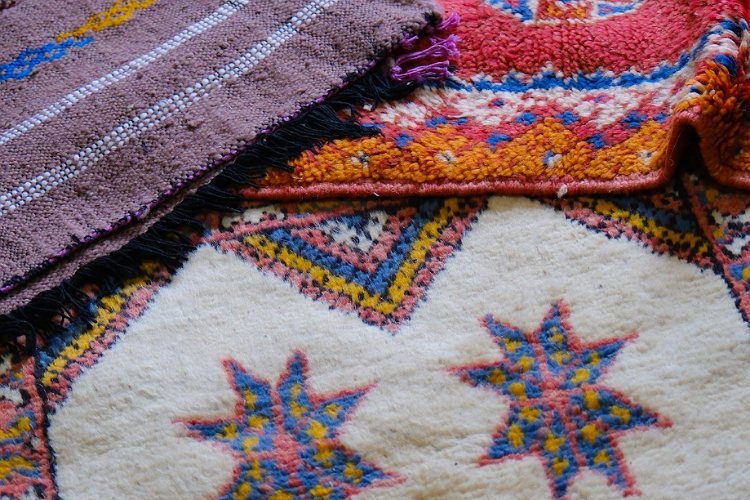According to recent market research, global sales of home décor items inspired by Turkish and Middle Eastern design have grown by over 35% in the past five years. Turkish décor has captured the attention of interior designers and homeowners worldwide, from the intricate patterns of handwoven rugs to the warm glow of lantern-lit living spaces. But what is it about this aesthetic that resonates so strongly in today’s interior design landscape?
Craftsmanship at Its Finest
At its core, Turkish décor is a celebration of craftsmanship. Turkey has a rich history of artisanal work that spans centuries, combining influences from the Ottoman Empire, Byzantine traditions, and Middle Eastern motifs. This legacy is evident in many signature elements of Turkish interiors, such as kilims, carpets, ceramics, and hand-painted tiles. Unlike mass-produced décor items, Turkish pieces carry a story and a sense of heritage, offering a depth and authenticity that appeals to modern consumers seeking meaningful, sustainable design choices. Authentic Turkish cotton towels, known for their softness and durability, are another example of the artisanal quality that elevates everyday home items into timeless décor.
The Iconic Turkish Rug
One of the most iconic elements of Turkish décor is the Turkish rug. Known for their vibrant colors, geometric patterns, and natural dyes, these rugs are much more than functional floor coverings—they are works of art. Each rug tells a story, often incorporating symbolic motifs passed down through generations. In contemporary homes, Turkish rugs are used not only on floors but also as wall hangings or layered over neutral furniture to create a focal point. Their ability to blend traditional craftsmanship with modern interior sensibilities makes them particularly versatile, appealing to both minimalists and maximalists alike.
Enchanting Turkish Lighting
Lighting is another hallmark of Turkish interior design. Turkish lanterns, often made of colored glass and intricate metalwork, create a warm, inviting ambiance. These lanterns bring a touch of exotic elegance to any space, whether in a living room, bedroom, or outdoor courtyard. Their soft, diffused light contrasts beautifully with modern minimalist décor, creating a cozy yet sophisticated environment. The interplay of light and color is a hallmark of Turkish aesthetics, emphasizing both beauty and atmosphere.
Rich and Vibrant Color Palettes
Color palettes in Turkish décor are also distinct and compelling. Rich jewel tones, such as deep sapphire, emerald green, ruby red, and amber, are often balanced with neutral backgrounds to create a striking yet harmonious look. This approach allows homeowners to introduce bold colors without overwhelming a space, giving interiors a sense of warmth and luxury. Turkish design often combines multiple textures—plush textiles, polished metals, carved wood, and smooth ceramics—to create spaces that are tactile and layered, inviting touch as well as visual admiration.
Eclectic Interiors and Cultural Fusion
Beyond its aesthetic appeal, Turkish décor also resonates with the global trend toward eclecticism. Modern interiors increasingly favor curated collections of objects from different cultures, blending heritage pieces with contemporary furnishings. Turkish décor fits seamlessly into this vision, offering elements that are both timeless and adaptable. Whether it’s a hand-painted ceramic vase on a modern console or a traditional lantern in a minimalist kitchen, Turkish pieces can serve as conversation starters, adding personality and depth to any room.
Social Media and Travel Influence
The influence of social media and travel culture has further fueled the popularity of Turkish décor. Instagram-worthy interiors and Pinterest boards often feature Turkish elements as symbols of exoticism, craftsmanship, and global sophistication. Travel shows, lifestyle blogs, and interior design magazines highlight markets in Istanbul, Cappadocia, and Izmir, showcasing everything from handmade copperware to handwoven textiles. As consumers increasingly seek inspiration from authentic cultural experiences, Turkish décor provides a tangible connection to a rich heritage that feels both accessible and aspirational.
Sustainability and Ethical Design
Sustainability is another factor contributing to the global trend. Many Turkish décor items are handcrafted using natural materials such as wool, cotton, and clay, often produced by small, family-run workshops. In a market increasingly concerned with ethical sourcing and environmental impact, these products offer an appealing alternative to mass-produced, synthetic décor. Purchasing Turkish handmade pieces supports artisans and preserves traditional techniques, adding an element of social responsibility to interior design choices.
Timeless Charm and Modern Appeal
In conclusion, the worldwide appeal of Turkish décor stems from its unique blend of artistry, history, and adaptability. It offers an aesthetic that is both visually stunning and culturally rich, making it highly desirable for modern interiors. With its vibrant colors, intricate patterns, warm lighting, and commitment to craftsmanship, Turkish décor allows homeowners to create spaces that are beautiful, inviting, and meaningful. As the world continues to embrace eclectic, globally inspired design, the timeless charm of Turkish interiors is unlikely to fade anytime soon.

